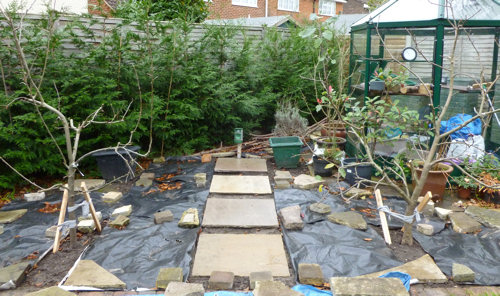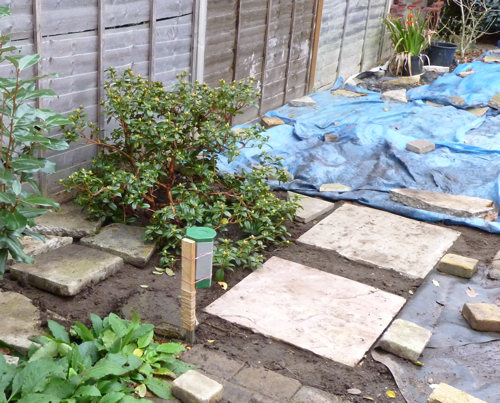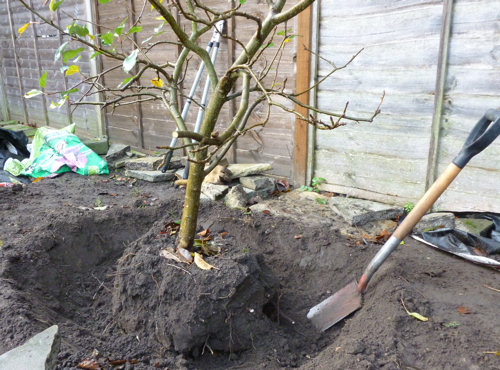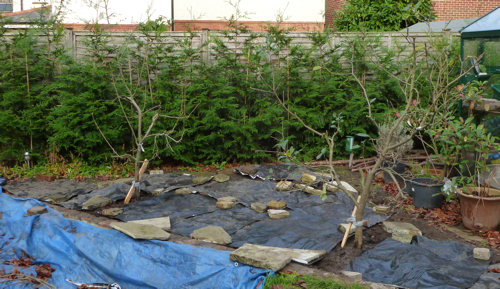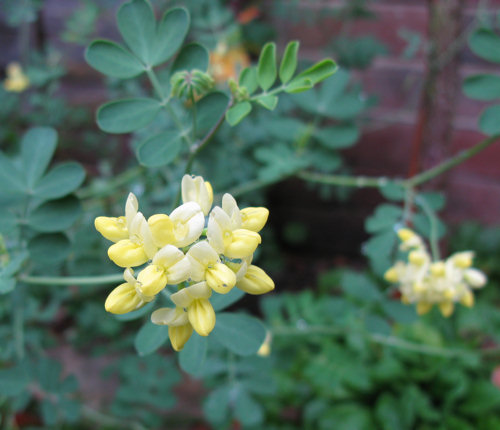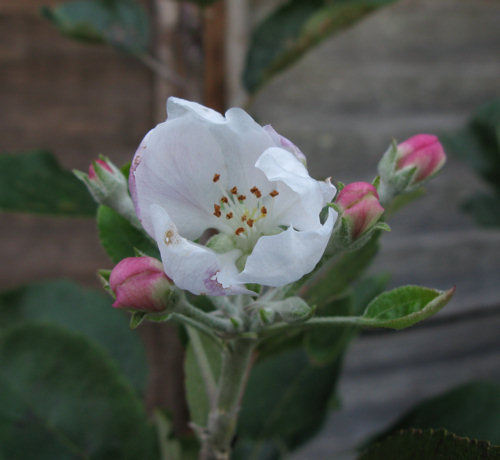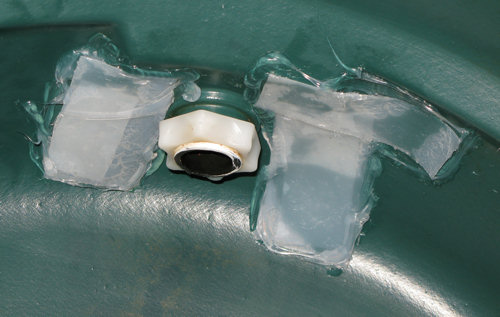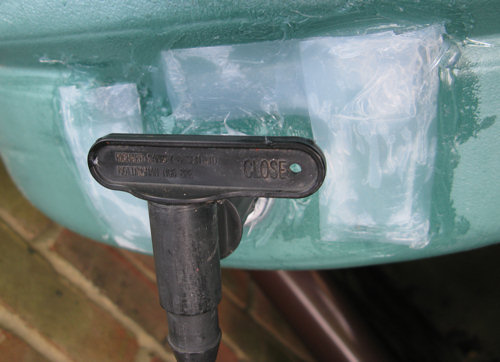Establishing the routes
I have now positioned seven of the ten paving slabs that I plan to use for stepping stones. Last week I put four between the apple trees.
The day after planting the apple trees, I decided to give them an extra stake each because strong winds were forecast. Today we have a red weather warning for storms in Scotland, and it’s pretty breezy here. I think the extra stake was a good move. In due course I will remove one of the stakes. Maybe. If I remember. I will also find something more attractive to put at the end of the path than one of my cat repellers.
I have also laid three stepping stones running up the side of the shallow pond. I planted the rhododendron to the left of the stepping stones. The rhododendron has grown enormous and it was very difficult to plant because its branches are so low down. After putting it in the hole I thought, sadly, that I would have to prune it.
But then I decided that I didn’t have to prune it very much. I just took off some crossing branches and trimmed the ends, and removed any stems I had broken while planting. Maybe I’ll take some more off after it has finished flowering in February. I have left plenty of room between it and the Elaeagnus because the Elaeagnus will grow much, much bigger, and I wouldn’t be surprised if the rhododendron did too.
Some time in the future I am going to have to decide what to do about the stepping stones in the long term. I have laid them straight onto soil, and used a spirit level to make sure they are roughly level and at the right height. I have lined them up by eye, not with poles and string. I think I would like to get in a professional to lay them properly on mortar and make sure they are nicely lined up, but if I do that, I will have to delay planting around the stones until that has been done, or the plants will only get in the way. It is not easy laying paving stones, especially when they turn out to not be exact squares and the surface is irregular.I think it will be essential to grow lots of plants in between them to hide any imperfections in their positioning.
You may think the slabs look too close together. I have positioned them 18 cm apart, which means that the distance between them matches my stride length. They would probably look better if I moved them further apart, and I would not need so many of them, but they would not be as comfortable.
I will not extend my line of three paving slabs any further in the same direction. The reason is that the pond has a very sharp corner which I don’t want to be tempted to walk into. I will divert the path off to the left, and plant something next to the sharp corner to make it very difficult for anyone to get near it. I may need extra stepping stones, but they don’t have to all be the same type.
So now I have nearly finished establishing my routes, and the apple trees and the rhododendron can get on with establishing their roots.
